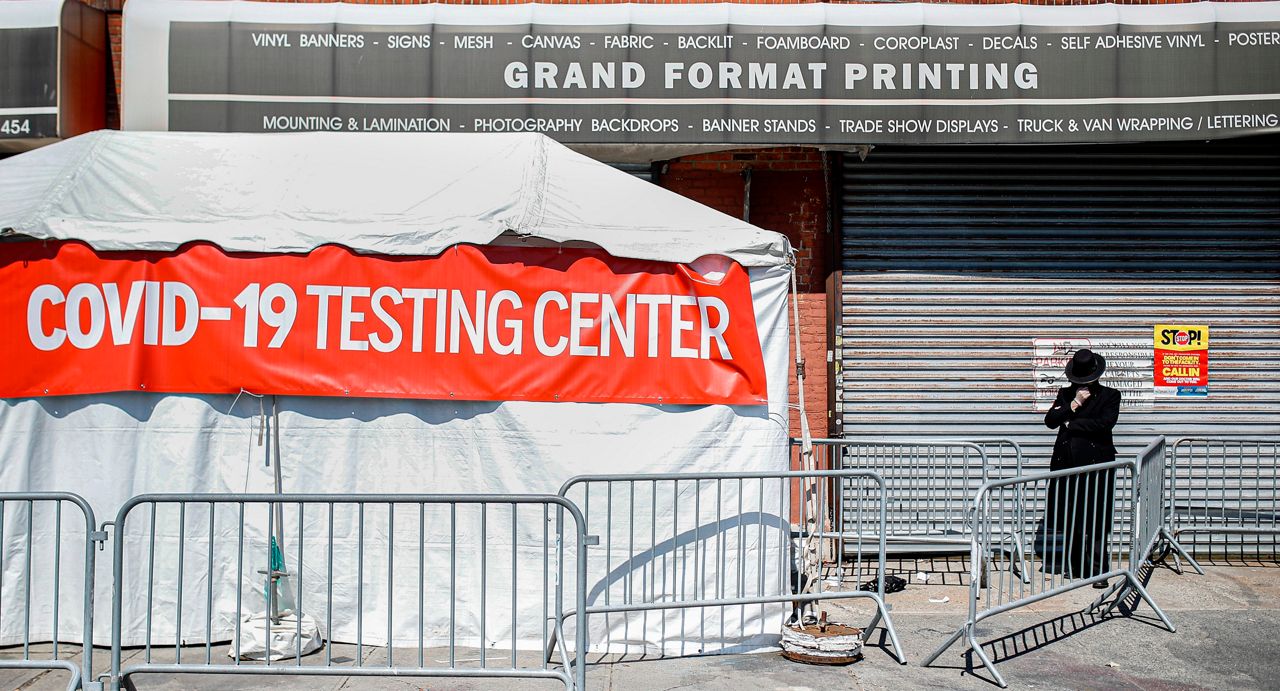NEW YORK - Gov. Andrew Cuomo Thursday unveiled a smartphone app that can alert users if they have been within six feet of someone who has tested positive for COVID-19.
The app, available to iPhone and Android users, sends an alert if a person has been in close proximity to someone for at least 10 minutes who has the virus and has also downloaded the app.
“It’s using technology really on a level that’s never been used before,” Cuomo said, crediting Apple and Google for their efforts. “I think it’s going to not only bring contact tracing to a new level, but it’s going to bring comfort.”
The app will work not just in New York, but New Jersey, Pennsylvania, Delaware and evenutally Connecticut.
The state says the app does not track your location or collect any personal information. Instead, it uses Bluetooth to find people who are nearby and also using the app.
This comes as the infection rate in the 20 zip codes statewide experiencing a surge in coronavirus cases jumped one percentage point, to 6.5 percent, Cuomo said.
The hotspots are in Brooklyn and Queens as well as in parts of Rockland and Orange Counties.
The governor said the biggest increases were seen in three Brooklyn zip codes: 11223, which jumped from 4 percent to 8 percent; 11210, which increased from 3.8 percent to 7.4 percent; and 11235, which went from 1.9 percent to 4 perent.
During a separate news conference, Mayor Bill de Blasio said the daily infection rate had ticked up slightly to 1.59 percent. The seven-day average is up as well, to 1.52 percent, though still below the 3 percent threshold that would trigger the suspension of in-person learning.
De Blasio said that randomized COVID-19 testing will begin at schools as well as increased monitoring of 10 zip codes in the city facing an uptick of infection cases.
Free, monthly testing will take place in every school starting next week, de Blasio said. Consent forms are required for students to undergo the new testing available, which consists of a nostril swab instead of the long instrument more commonly used to test for the virus.
Nearly 1,000 city personnel are being dispatched to neighborhoods largely in southern Brooklyn, central Queens and parts of the Rockaways as part of an increased effort to quell the rise of infection cases taking place across 10 zip codes. Their efforts include the distribution of thousands of masks, education, outreach and inspections of businesses and schools in these communities experiencing an infection rate above 3%.
The mayor also announced that they’ll be keeping an eye on other neighborhoods seeing a slight uptick in cases, although not yet reaching above 3%. These areas include East Williamsburg/Williamsburg, Bedford-Stuyvesant/Clinton Hill/Fort Greene, Kensington/Windsor Terrace, Brighton Beach/Manhattan Beach/Sheepshead Bay, Crown Heights, Rego Park, Hillcrest/Jamaica Estates/Jamaica Hills.
De Blasio said the city Wednesday issued 130 warnings and 16 fines.
"We are seeing, thankfully, overwhelmingly, a growth in compliance," de Blasio said. "We're seeing more and more mask usage; we're seeing more and more adherence to the rules, but still not enough, so we have to keep pushing forward."



